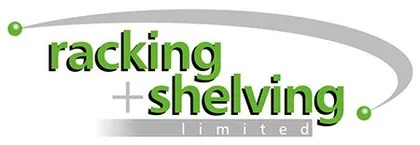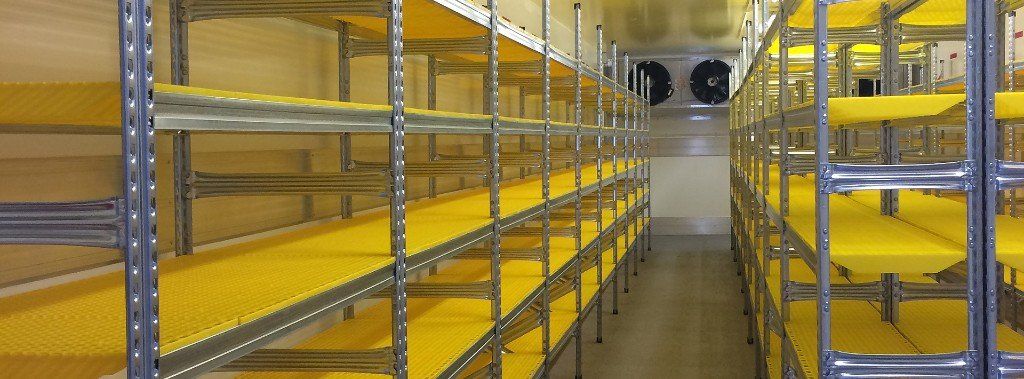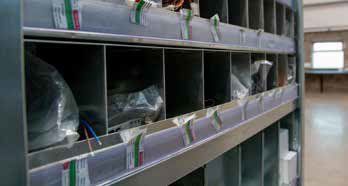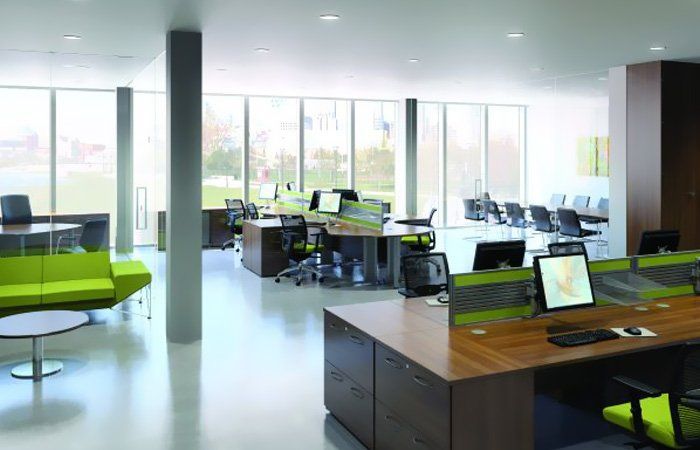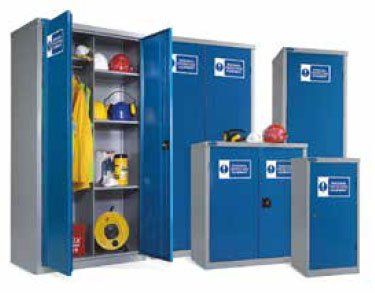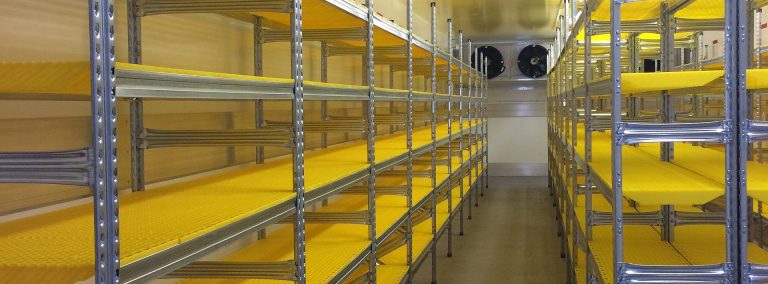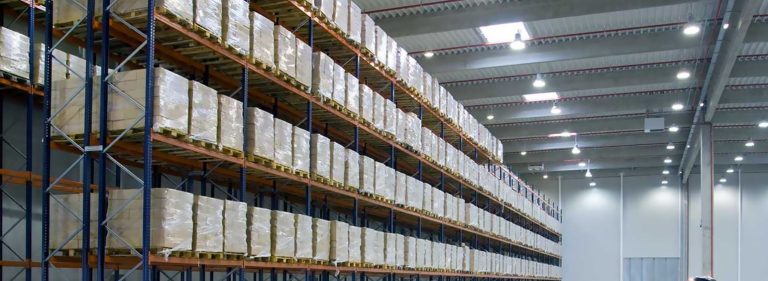What is the difference between shelving and racking? | RSLNI
What exactly does racking or shelving refer to?
You may hear the words ‘shelving’ and ‘racking’ used interchangeably when it comes to ensuring your warehouse is well-organised.
However, the two terminologies refer to unique types of storage. In this article, we’ll look at the differences and similarities between the two, and how you can use them to optimise the flow of your warehouse.
- What is shelving?
- What is racking?
- Shelving vs racking: the differences and similarities
- How can you use shelving in your warehouse?
- How can you use racking in your warehouse?
- Should I use racking or shelving in my warehouse?
- In summary: both racking and shelving can make a big difference to your storage space
- Need support determining which type of storage is right for you?
What is shelving?
Shelving (often called ‘industrial shelving’) is a system of storing products that are manually retrieved by hand. For example, if you operate a warehouse where people need to pick products off the shelves.
Shelving can be constructed from any type of material (although metal is most often used) and can be any height. Some people think shelving has to be under a specific height to be classified as shelving, but this isn’t the case. It can be as tall as you need it to be!
Shelving can have a closed back or an open back. While an open back means warehouse operatives can grab items from any direction, closed back shelving looks nicer and is generally more durable.
What is racking?
Racking (often called ‘pallet racking’) is a system of storing products that need to be retrieved by a forklift, order picker or a similar machine. These products are typically very heavy and/or irregularly sized, or stored in bulk on a pallet.
Racking is made of extremely heavy-duty materials to make sure it can withstand being knocked by a 4,000kg forklift truck several times a day!
Like shelving, racking can be constructed from any type of material and can be any height. However in our experience, most racking tends to be taller and deeper than shelving.
Shelving vs racking: the differences and similarities
We’ve looked at what racking and shelving are, but how are they different, and what do they have in common? Let’s take a look.
- Shelving is ideal for storing products that are retrieved by hand, while racking is ideal for storing products retrieved by machine
- Shelving is generally more aesthetically pleasing, while racking is designed for more industrial use
- Shelving can be used in any environment, while racking is typically seen in warehouses and industrial environments
- Racking is more heavy-duty than shelving
- Racking can be stacked higher than shelving
- Racking is deeper than shelving
- Racking generally needs to be attached to the floor or wall for safety, while shelving doesn’t have to be
- Both racking and shelving come in several different designs and styles
- Both racking and shelving need to be regularly monitored and assessed to make sure they stay safe
- Both should not be climbed on unless they have been specifically designed to be used as access equipment
How can you use shelving in your warehouse?
When people think of shelving, they automatically think of the shelves they may use at home to store their books, CDs and pantry essentials.
However, warehouse shelving is a lot more sturdy and can be used to store a wide range of products safely and securely.
You can store products directly on shelving or, alternatively, use drawers, dividers and bins to make it as easy as possible to find the right item.
There are many different types of shelving available, including:
- Tyre racking
- Boltless shelving
- Longspan shelving
- Multi-tier shelving
- Mobile shelving
- Carton live shelving
- Mistral shelving
Each has been designed to optimise storage space and ensure warehouse operatives can easily access products.
Find out more about the different types of industrial shelving we provide.
How can you use racking in your warehouse?
As racking is taller and deeper than shelving, you can use it to stack items on top of each other and make the most of the vertical space in your warehouse.
If you don’t want to (or can’t) install a mezzanine floor , racking is great for optimising the space you already have.
There are several different types of racking available, including:
- Tyre racking
- Pallet racking
- Adjustable racking
- Pushback racking
- Mezzanine racking
- Cantilever racking
- Mobile pallet racking
- ‘Drive In Drive Through’ racking
- Roller racking
- Very narrow aisle (VNA) racking
The right kind of racking for your needs will depend on the products you need to store, the space you have available and how large the pallets you store are. Find out more about the different types of warehouse racking.
Should I use racking or shelving in my warehouse?
There isn’t a right or wrong answer to this question. It ultimately depends on the items in your warehouse and how they need to be handled.
Let’s say you’re a small eCommerce business that sells jewellery. As you deal with small, delicate items that staff must handle carefully, a shelving solution is probably ideal. Alternatively, let’s say you’re a large national toy wholesaler. Racking means you can store products in bulk and move them out on pallets, ready to send to toy stores across the country.
It’s also okay to combine the two solutions if it’s relevant to what you have in your warehouse. For example, any smaller products can be placed on shelving, meaning warehouse staff can quickly access what they need. Then any larger items can be stored using racking, storing as high as possible to maximise the space available.
While smaller businesses that don’t use automated equipment can typically get away with just shelving, a larger warehouse usually needs a combination of racking and shelving.
As there are many different types of racking and shelving, you can choose the right option for your specific needs. However, if you’re not sure which kind of racking and shelving is right for your business, we’re always happy to suggest some ideas.
From a health and safety perspective, we do recommend installing racking and shelving as far away from each other as possible. That way, warehouse operatives on foot will not be in the proximity of warehouse operatives using mechanical handling devices.
In summary: both racking and shelving can make a big difference to your storage space
While they are different in style and design, racking and shelving both serve a similar purpose when it comes to storing items safely in your warehouse.
By adapting your storage solution in line with the products you have in stock, you can improve efficiencies and ensure everything can be accessed easily and safely.
We hope this article has explained the difference between racking and shelving. Now when someone you work with uses the terms interchangeably, you’ll be able to explain the differences and similarities between the two!
Remember: shelving is ideal for products that need to be accessed by hand, while racking is ideal for products that need to be accessed by machines like forklift trucks.
Need support determining which type of storage is right for you?
If you need a little extra help determining the best way to lay out your warehouse, we can help. We specialise in designing and installing customised warehouse storage solutions for businesses across the UK.
Our team of experts will work with you to ensure your products are not only easy to access as possible, but are stored safely too.
Contact us today to find out more and to arrange your free consultation.
